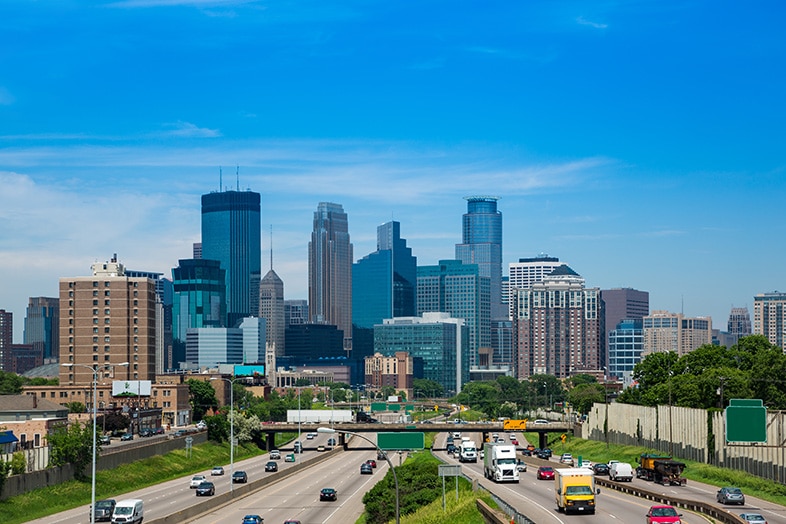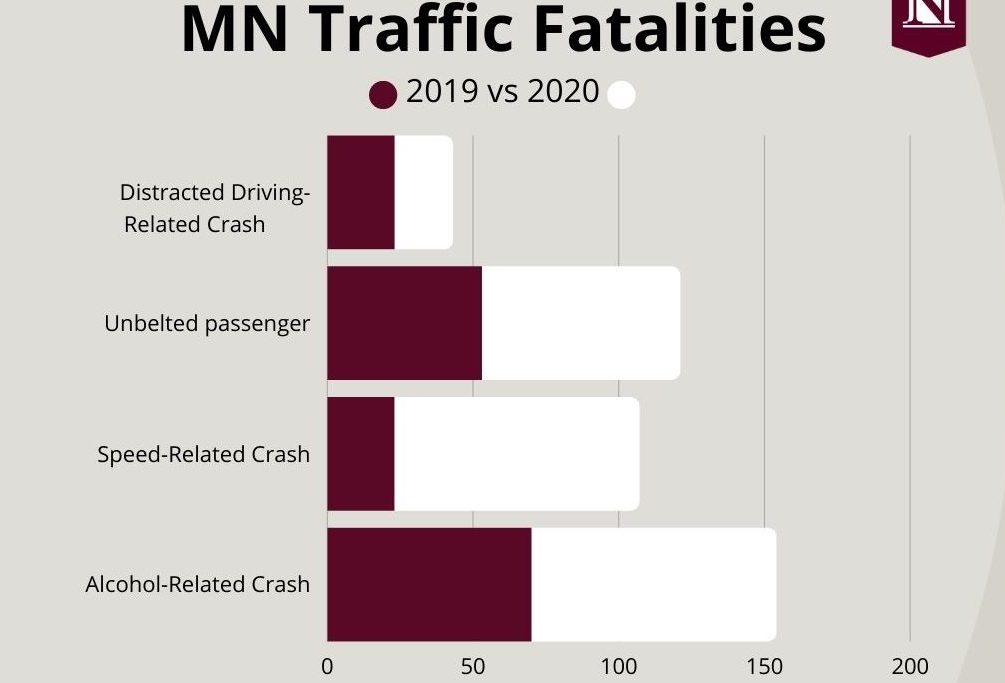
Despite fewer people on the roads due to COVID-19, Minnesota is reporting higher than usual traffic fatalities.
State officials first noticed this troubling trend at the beginning of the coronavirus crisis, when highway traffic decreased by about 50 percent. While one might expect that fewer cars on the road would mean fewer chances for reckless or negligent drivers to cause fatal accidents, crash statistics tell a different story.
In the first 45 days after the state’s stay-at-home order went into effect, Minnesota saw a staggering 13-percent increase in traffic fatalities over the same period the year before. And unfortunately, things have not improved much since the order was lifted. In September, Minnesota traffic fatalities were up 37 percent compared with the previous year.
The significant rise in fatal crashes and fatalities has state officials concerned, especially as the state prepares to enter the most dangerous driving season: winter. According to the Minnesota State Patrol, an average of 103 traffic fatalities occur on state roads between October 1 and December 31.
It’s unlikely Minnesota can avoid adding more fatalities to its growing tally. However, drivers are advised to note the trends and do their part to keep state roads as safe as possible.
Minnesota Traffic Trends in 2020
Preliminary data from the Minnesota Department of Public Safety (DPS) reports that traffic fatalities are up about 5 percent compared with the year before.
These statistics have caught many by surprise, as traffic fatalities have actually fallen nationally. But that’s not the case in Minnesota, where traffic deaths are already on track to surpass the previous year’s total of 364.
The rising numbers have raised a red flag for many officials, including Mike Hanson, traffic safety director for DPS.
“The number of people dying on our roads is alarming and gets scarier each day,” Hanson told MPR. “While the statistics help us understand what is happening on our roads, each of those losses is a mother, father, brother, sister, son, or daughter.”
State authorities have expressed similar concerns. In a statement to the Minnesota Office of Traffic Safety, Chief of the Minnesota State Patrol Matt Langer said, “Less traffic on the roads should be creating fewer fatalities, but it has not. I encourage Minnesota drivers to refocus their priorities while behind the wheel to make the roads safer for all of us.”
Of those who have died on Minnesota roads, 191 were occupants in a motor vehicle, 54 were motorcyclists, 35 were pedestrians, and nine were bicyclists. All of these numbers are higher than they were at the same time the year previous.
Speed a Factor Behind Minnesota’s Rise in Traffic Fatalities

Minnesota is among several states that have seen a surge in speeding motorists this year, along with Georgia, California, and Colorado. In Minnesota, statistics reveal that state authorities have issued significantly more speeding tickets in recent months.
One possible explanation for increasingly reckless driving is the vacancy of the roadways. As fewer drivers take to the streets, more lane space becomes available for drivers to use and abuse, and many drivers are taking advantage of the unusually quiet roads.
“The two things that we’re seeing out there are aggressive, careless driving and speeds, and in many cases, really excessive speeds,” Mike Hanson told MPR.
A leading cause of traffic fatalities statewide, speeding increases a vehicle’s stopping distance, reduces a driver’s reaction time, and leads to more damage in an accident. In addition, speeding drivers tend to weave among lanes to pass slower-moving traffic, further increasing their risk of being in a crash.
Sadly, the result of this recklessness is reflected in this year’s crash deaths—nearly a third of which have resulted from speeding.
This deadly trend has prompted state officials to issue a warning to drivers. “We share a latitude with Germany, but we don’t have an autobahn in Minnesota,” Assistant Public Safety Commissioner Booker Hodges said during a recent news conference. “We need people to slow the hell down.”
Alcohol has also contributed to many of the state’s fatal accidents this year. So far, 90 fatal crashes have involved driving while under the influence of alcohol.
However, there is a silver lining hidden in this year’s distressing crash stats. While speed-related and alcohol-related fatal crashes have increased, preliminary data suggest that distracted driving-related deaths are down by about 13 percent.
Of the many trends playing out on Minnesota roads, this is one that many people hope will continue—especially as roadway conditions continue to decline.
Safe Driving Reminders for Minnesota Travelers
One reason these trends are so concerning is that many of these accidents could have been avoided. All drivers have a duty to obey traffic laws and exercise reasonable care behind the wheel, which includes not speeding or driving while impaired. Those who choose not to follow these rules put themselves and others at risk, and Minnesota motorists suffer the consequences.
“The choices you make could change the life of the person next to you on the road and the people they are important to,” said Mike Hanson.
To keep our roads safe through the rest of 2020, Minnesota drivers should keep the following driving tips in mind:
Be mindful of your speed. Faster speeds reduce a driver’s reaction time, increase the stopping distance of a vehicle, and lead to more damage in a crash.
Drive without distraction. Distracted driving is a leading cause of crash deaths nationwide. Minimize your risk of being in an accident by eliminating as many distractions as possible—especially your phone.
Buckle up. According to the Minnesota Department of Public Safety, 77 people have died in crashes while not wearing their seatbelt in 2020.
Never drive impaired. Alcohol and drugs impair a driver’s reaction time and focus, which increases his or her risk of being in an accident.
Taking these precautions can help drivers mitigate the risks of being in or causing an accident. Please be kind to your fellow Minnesota drivers this year by making a renewed commitment to slow down, put your phone away, drive sober, and drive smart.